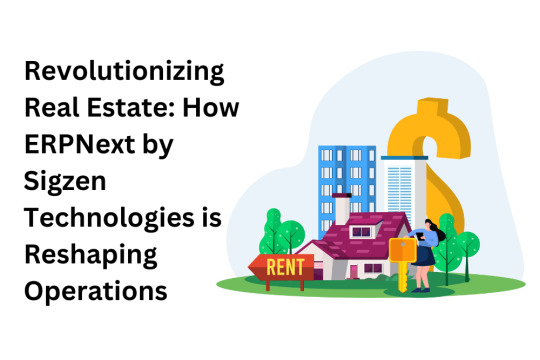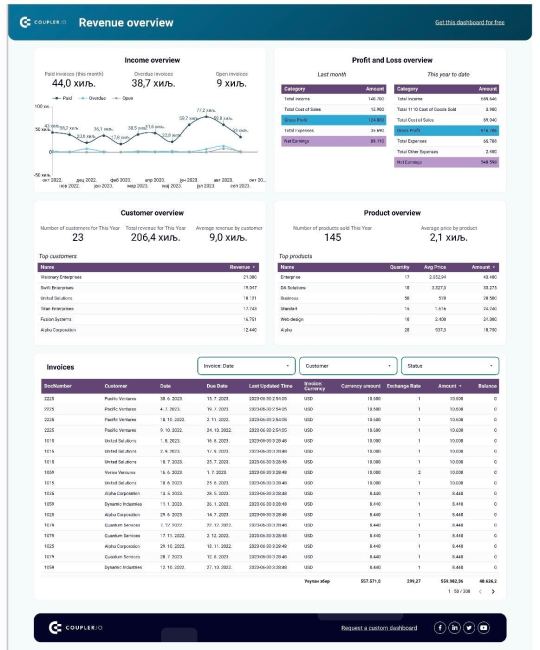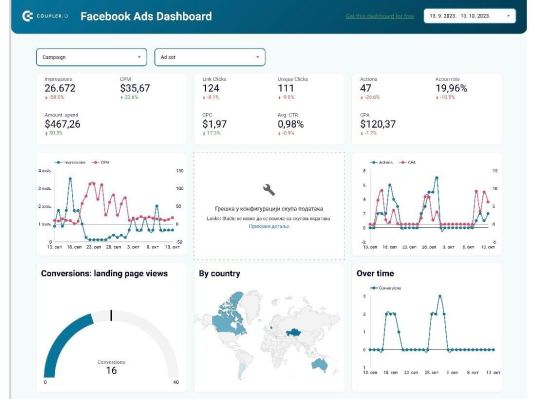#Operational Analytics
Explore tagged Tumblr posts
Text
Reasons To Prefer Operational Analytics Software For Enterprise Solutions
For every business, operational analytics takes a significant approach to establishing a new level of integration. As an owner or staff, you must use operational analytics software to use their data accordingly. It should be easy to secure the data and completely useful for gathering information on your operational purpose. The software will establish a clear-cut solution and operate the business successfully.
On the other hand, it will handle big data and analyze them completely with a business-focused approach. The customer experience is interesting and shifts towards the company's operational goals. The performance is always at a high level, and does the business within a short time.
Why Does An Enterprise Or Business Need Operational Analytics Software?
Enhance Performance And Margins
Most businesses today rely on the complete goal and reduce costs accordingly. It should be easy for business owners to take part in a streamlined process completely. It allows you to save money and be more efficient as well. Of course, it will increase the profits and help to improve the operations using the data. It will help gain profits and earn customer analytics depending on the requirements. The profits will be gained double, hence suitable for growing your business at a top level.
Better Decision Making
Making a proper decision is relevant to updating the organization with steady goals. Of course, it partakes the results and would prefer the best way to explore operational analytics. They take an important role and establish a new experience with proper decision business values. According to the requirements, they can handle everything based on operational analytics and are meant to explore new solutions.
Competitive Advantage And Handling Inefficiencies
Enterprise operational analytics seems the best thing and can explore many benefits. They can understand everything based on the efficient process. It gives you a better convenient solution and focuses on the analysis value. The customer data will be prompted with operational data and save money to reinvest in more profitable pursuits. The data will be evaluated based on the operational process and need to examine the results and time to connect well with the survey and make the process valuable.
Gain 100% Customer Satisfaction
Furthermore, enterprise operational analytics allows business owners to access counterintuitive and explores enhanced customer experience. The data can be accessed per the organization's goals and decrease customer needs. The operational analytics software gains more useful solutions and handles everything based on the factors to be considered. With operational analytics, it will gain root cause and be able to focus on performance issues and fix the right ways. Thus, customers must gain more insights about the business and handle everything based on customer satisfaction.
Streamlining Data
Security is the main thing we could see in the enterprise-level business. However, it should be valid and meant to get into the backup and recovery until the data is secured. Thus, it considers the vital role and manages it depending on the efficiency and handling spot system with problem-free solutions. You can easily gain customer insights, and employees will be satisfied working.
#enterprise operational analytics#operational analytics#operational analytics software#it operational analytics#advanced operational analytics
2 notes
·
View notes
Text
Exactly 🙂↕️

#this is how I attempt to operate#I love to bring an analytical mind to pop culture and media consumption
13 notes
·
View notes
Text
From Data to Decisions: Leveraging Product Analytics and AI Services for Faster B2B Innovation
In today’s competitive B2B landscape, innovation isn’t just about having a great product idea. It’s about bringing that idea to life faster, smarter, and with precision. That means making every decision based on real data, not guesswork. At Product Siddha, we help businesses unlock faster B2B innovation by combining the power of product analytics and AI services into one seamless strategy.
Why B2B Innovation Fails Without Data-Driven Insight
Most B2B companies struggle to innovate at scale because they lack visibility into what users actually do. Product teams launch features based on assumptions. Marketing teams operate without a feedback loop. Sales teams miss opportunities due to fragmented data. This disconnect creates wasted effort and missed growth.
Product analytics is the solution to this problem. When integrated with AI services, you don’t just track user behavior — you predict it. This lets you make smarter decisions that directly improve your product roadmap, customer experience, and business outcomes.
The Power of Product Analytics in B2B Growth
Product analytics turns user behavior into actionable insight. Instead of relying on vanity metrics, Product Siddha helps you understand how real people interact with your product at every stage. We implement tools that give you a complete view of the user journey — from first touchpoint to long-term retention.
With powerful product analytics, you can:
Identify high-impact features based on real usage
Spot friction points and user drop-offs quickly
Personalize product experiences for higher engagement
Improve onboarding, reduce churn, and boost ROI
This is not just reporting. It’s clarity. It’s control. And it’s the foundation of faster B2B innovation.
Accelerate Outcomes with AI Services That Work for You
While product analytics shows you what’s happening, AI services help you act on that data instantly. Product Siddha designs and builds low-code AI-powered systems that reduce manual work, automate decisions, and create intelligent workflows across teams.
With our AI services, B2B companies can:
Automatically segment users and personalize messaging
Trigger automated campaigns based on user behavior
Streamline product feedback loops
Deliver faster support with AI chatbots and smart routing
Together, AI and analytics make your product smarter and your business more efficient. No more delayed decisions. No more data silos. Just continuous improvement powered by automation.
Our Approach: Build, Learn, Optimize
At Product Siddha, we believe innovation should be fast, measurable, and scalable. That’s why we use a 4-step framework to integrate product analytics and AI services into your workflow.
Build Real, Fast
We help you launch an MVP with just enough features to test real-world usage and start gathering data.
Learn What Matters
We set up product analytics to capture user behavior and feedback, turning that information into practical insight.
Stack Smart Tools
Our AI services integrate with your MarTech and product stack, automating repetitive tasks and surfacing real-time insights.
Optimize with Focus
Based on what you learn, we help you refine your product, personalize your messaging, and scale growth efficiently.
Why Choose Product Siddha for B2B Innovation?
We specialize in helping fast-moving B2B brands like yours eliminate complexity and move with clarity. At Product Siddha, we don’t just give you data or automation tools — we build intelligent systems that let you move from data to decisions in real time.
Our team combines deep expertise in product analytics, AI automation, and B2B marketing operations. Whether you’re building your first product or scaling an existing one, we help you:
Reduce time-to-market
Eliminate development waste
Align product and growth goals
Launch with confidence
Visit Product Siddha to explore our full range of services.
Let’s Turn Insight into Innovation
If you’re ready to use product analytics and AI services to unlock faster B2B innovation, we’re here to help. Product Siddha builds smart, scalable systems that help your teams learn faster, move faster, and grow faster.
Call us today at 98993 22826 to discover how we can turn your product data into your biggest competitive advantage.
2 notes
·
View notes
Text
I feel extra bad repurposing my old laptop I technically replaced five years ago for GC data analysis because every time it needs to integrate a peak that’s not entirely perfectly even it has to work so hard it almost crashes the programs running, but instead of loudly complaining and running the fans like crazy like my current laptop it just quietly suffers through it until it gets the job done.
#stem student#chromatography#my laptop got to enjoy retirement for five years at least#now it’s back to statistics and trace analytics#screw my new computer not having the operating system for our old ass uni software
2 notes
·
View notes
Text
Optimizing Real Estate Operations: How ERPNext by Sigzen Technologies Transforms the Industry
In the bustling world of real estate, where every minute and transaction matters, having a robust and versatile management system isn’t just beneficial,it’s essential. ERPNext, designed to revolutionize the way real estate businesses operate, is a game-changer. This cloud-based ERP solution, meticulously tailored to meet the diverse and demanding needs of the industry, integrates every facet of…

View On WordPress
#Cloud ERP#Digital Transformation#ERPNext#Financial Analytics#Lease Management#operational excellence#Property Management#Property Portfolio#RealEstate Innovation#RealEstate Technology
2 notes
·
View notes
Text
Augusta Ada King, Countess Lovelace (1815-52), a skilled mathematician, was the daughter of Lord Byron and a friend and colleague of Charles Babbage: 'the father of computers'. In 1843, she published a translation from Italian of a 'sketch' of Babbage's analytical engine with her own notes. It suggested the 'engine' could do more than calculation; she described an operations sequence, the first computer program.

"Normal Women: 900 Years of Making History" - Philippa Gregory
#book quotes#normal women#philippa gregory#nonfiction#augusta ada king#countess lovelace#ada lovelace#mathematician#lord byron#friends#colleagues#charles babbage#italian#translation#analytical engine#computer program#operations sequence#computing
5 notes
·
View notes
Link
3 notes
·
View notes
Text
Remote Work Revolution: Job Vacancies in the Virtual Office
The way we work has undergone a seismic shift in recent years, and it's not just a passing trend. The Remote Work Revolution is here to stay, and it's transforming the job market as we know it. In this blog post, we'll explore the opportunities presented by this revolution and the myriad job vacancies that have emerged in the realm of the virtual office.

1. Remote Project Manager
Project management remains a vital function, even in a virtual office setting. Remote project managers oversee teams, set goals, and ensure that projects are completed efficiently and on time.
2. Virtual Administrative Assistant
Administrative assistants continue to play a crucial role in remote work. They manage calendars, coordinate meetings, and handle a wide range of administrative tasks that keep virtual offices running smoothly.
3. Digital Marketing Specialist
In a world where online presence is everything, digital marketing specialists are in high demand. They create and execute online marketing strategies, optimizing a company's visibility and reach in the digital landscape.
4. Software Developer
Remote software developers design, build, and maintain the software that powers the virtual office. They collaborate with global teams to develop applications, websites, and other digital solutions.
5. Customer Support Representative
The need for excellent customer support remains unchanged. Remote customer support representatives address customer inquiries and issues via email, chat, or phone, providing top-notch service from anywhere in the world.
6. Virtual Sales Representative
Sales teams have adapted to remote work, and virtual sales representatives connect with clients and prospects through virtual meetings and online communication channels.
7. Data Analyst
Data analysts gather and interpret data to provide insights that guide business decisions. Their work helps companies make data-driven choices, leading to improved efficiency and profitability.
8. Telemedicine Practitioner
The healthcare industry has embraced telemedicine, leading to job vacancies for remote doctors, nurses, therapists, and other healthcare professionals who provide medical consultations and care remotely.
9. Online Education Instructor
Online education has witnessed exponential growth, creating opportunities for online instructors who conduct virtual classes and offer remote support to students worldwide.
10. Content Creator
Content creators generate written, visual, or audio content for websites, blogs, social media, and other digital platforms. They play a critical role in engaging and informing virtual audiences.
11. Human Resources Manager
HR managers are responsible for recruiting, onboarding, and managing remote employees, ensuring a smooth and positive experience for all.
12. Cybersecurity Specialist
With the increased reliance on digital technologies, cybersecurity specialists are in high demand to protect company data and systems from cyber threats.
13. Virtual Event Planner
Virtual event planners design and coordinate virtual conferences, webinars, and other online gatherings, ensuring a seamless and engaging experience for attendees.
14. Remote Financial Analyst
Financial analysts analyze financial data to provide insights that drive business decisions, even from remote locations.
15. Online Psychologist or Counselor
Remote psychologists and counselors provide mental health support to clients through virtual sessions, expanding access to mental health services.
The Remote Work Revolution has unlocked a world of possibilities, allowing individuals to pursue meaningful careers while maintaining flexibility and work-life balance. The virtual office is no longer just a temporary solution; it's a fundamental shift in how we work, and it's opening up a wealth of job vacancies for those ready to embrace this new way of working. As remote work continues to evolve, these job vacancies will continue to adapt and expand, creating exciting opportunities for job seekers in the virtual office of the future.
#employee engagement#hr analytics and reporting#hrsoftware#hr operation#hr services#hr solutions#onboarding
3 notes
·
View notes
Text
Navigating Real-Time Operations: The Power of Operational Dashboards
Operational dashboards are dynamic visual interfaces that provide real-time insights into an organization's day-to-day activities and performance. These dashboards are particularly valuable for monitoring short-term operations at lower managerial levels, and they find application across various departments. They stand as the most prevalent tools in the realm of business intelligence.
Typically, operational dashboards are characterized by their comprehensive nature, offering junior managers detailed information necessary to respond to market dynamics promptly. They also serve to alert upper management about emerging trends or issues before they escalate. These dashboards primarily cater to the needs of managers and supervisors, enabling them to oversee ongoing activities and make rapid decisions based on the presented information. Operational dashboards often employ graphical representations like graphs, charts, and tables and can be customized to display information pertinent to the specific user.
Examples of data typically showcased on an operational dashboard include:
Sales figures
Production metrics
Inventory levels
Service levels
Employee performance metrics
Machine or equipment performance data
Customer service metrics
Website or social media analytics
It is crucial to emphasize that operational dashboards are distinct from other dashboard types, such as strategic and analytical dashboards. These different dashboards serve varied purposes and audiences and contain dissimilar datasets and metrics. Here are a couple of examples.
Below, you can see a Revenue overview dashboard for QuickBooks. It provides month-by-month overviews of invoices, products, customers, profit and loss. Such a dashboard can be used on a daily basis and help monitor and manage operating activities.
This data visualization is connected to a data automation solution, Coupler.io. It automatically transfers fresh data from QuickBooks to the dashboard, making it auto-updating. Such a live dashboard can be an important instrument for enabling informed decision-making.

This Revenue overview dashboard is available as a free template. Open it and check the Readme tab to see how to use it.
Here’s another example of an operational dashboard, the Facebook Ads dashboard. It allows ad managers to closely track their ad performance. This dashboard is also powered by Coupler.io, so it depicts ad data in near real-time. This allows marketers to quickly define what works and what doesn’t and make adjustments on the go.

Facebook Ads dashboard is available as a free template. You can grab it and quickly get a copy of this dashboard with your data. In conclusion, operational dashboards are indispensable tools for organizations seeking to thrive in a dynamic business landscape. These real-time visual displays offer invaluable insights into day-to-day operations, equipping managers and supervisors with the information to make swift, informed decisions. As the most widely used business intelligence instruments, operational dashboards empower businesses to adapt to market changes, identify emerging trends, and maintain a competitive edge. Their versatility and capacity to monitor a wide range of metrics make them an essential asset for managing the intricacies of modern operations.
#marketing dashboards#digital marketing#dashboards#data analytics#data visualization#operational dashboards
2 notes
·
View notes
Text
Transforming Vessel Efficiency: Leveraging Data-Driven Insights for a Sustainable Future
Introduction
Optimizing vessel efficiency has become not just a competitive advantage but a necessity. Shipping companies are under increasing pressure to reduce operational costs, comply with stringent environmental regulations, and minimize their carbon footprint. As global trade continues to expand, so does the need for smarter, data-driven solutions. This is where leveraging data-driven insights comes into play, transforming vessel operations and driving the future of maritime efficiency.
The Increasing Importance of Vessel Efficiency
Vessel efficiency is essential for several critical reasons. First and foremost, cost reduction is a driving force. Fuel costs represent one of the largest operational expenses for shipping companies. In fact, optimizing vessel efficiency can lead to fuel savings of up to 15%, resulting in substantial reductions in overall operating costs. One way this is achieved is through smart propulsion systems that adjust fuel consumption in real time based on operational conditions, ensuring that vessels operate at peak efficiency.

But it’s not just about fuel savings. With stringent regulations set by the International Maritime Organization (IMO) aimed at reducing greenhouse gas emissions, operational efficiency has become critical for regulatory compliance. The IMO has set ambitious targets: a 30% reduction in emissions by 2030 and an 80%reduction by 2040. Meeting these targets will require shipping companies to focus on optimizing their vessels' operational efficiency.
On the environmental front, the shipping industry is responsible for approximately 3% of global CO2emissions. Environmental responsibility is becoming increasingly important, and improving vessel efficiency helps to lower emissions, making a significant contribution to the global effort to combat climate change.
Importance of Vessel Efficiency in Modern Shipping
As operating costs rise due to factors like high interest rates, increasing shipbuilding costs, and the extended lifespan of older vessels, the importance of vessel efficiency has become more evident than ever. However, vessel efficiency goes beyond just fuel consumption—it is a multifaceted issue that requires a holistic approach to optimize.
Vessel efficiency can be broken down into three key categories:
1. Structural Efficiency: This includes innovations like new vessel designs, retrofits, and advanced propulsion systems.
2. Maintenance Efficiency: Regular hull cleaning, engine maintenance, and proactive maintenance scheduling can significantly reduce fuel consumption and downtime.
3. Operational Efficiency: Minimizing idle time, optimizing fleet size, and adopting best practices can drastically improve operational performance.
By addressing each of these categories, shipping companies can unlock vast improvements in vessel efficiency, ultimately leading to reduced costs, improved sustainability, and a stronger competitive edge.
The Role of Data in Enhancing Efficiency
Data is at the core of optimizing vessel efficiency. With the advent of real-time monitoring and advanced analytics, shipping companies can continuously track and analyze vessel performance. Sensors on board gather data on key metrics like speed, fuel consumption, engine performance, and weather conditions. This data can be analyzed in real time to make informed decisions that improve fuel efficiency, reduce costs, and ensure regulatory compliance.
One of the most impactful ways data enhances efficiency is through dynamic route optimization. By integrating weather data, ocean currents, and other environmental factors, shipping companies can plan more efficient routes, reducing fuel consumption and travel time. This ensures vessels are always operating at their best, no matter the external conditions.
Furthermore, data enables predictive maintenance, which is crucial for avoiding costly breakdowns. By analyzing sensor data, operators can identify potential issues before they become critical, saving time and money on repairs and preventing unexpected downtime.
The Power of Data in Steering Operational Efficiency
Data-driven insights not only help companies monitor vessel performance but also provide actionable recommendations to improve efficiency. By examining historical data, operators can identify patterns and trends that reveal areas for operational improvement. For example, fuel consumption predictions become more accurate by analyzing past performance data and factoring in vessel designs and engine specifications. Routine performance evaluations through reports, KPIs, and interactive dashboards ensure that operational efficiency remains a top priority.
Additionally, the integration of machine learning algorithms allows shipping companies to automate data analysis, detect inefficiencies, and make proactive adjustments. This creates a culture of continuous refinement, ensuring vessels are always operating at peak performance.
How Can Data-Driven Insights Improve Vessel Efficiency?
There are several powerful ways data-driven insights can optimize vessel efficiency, including:
1. Fuel Efficiency Optimization
Real-Time Monitoring: Implementing IoT sensors enables operators to track fuel consumption in real time, adjusting parameters to reduce waste and optimize fuel use.
Predictive Analytics: By analyzing historical data, operators can predict future fuel needs and adjust operations accordingly, preventing overconsumption.
2. Route Optimization
Weather and Ocean Current Data: By integrating external data such as weather forecasts and ocean currents, shipping companies can optimize routes to minimize fuel consumption and improve travel times.
Dynamic Routing Algorithms: These algorithms can adapt routes in real time based on changing conditions, ensuring vessels always follow the most efficient path.
3. Performance Benchmarking
KPIs: Establishing KPIs based on past performance helps operators measure current operations against benchmarks, identifying areas for improvement.
Comparative Analysis: By analyzing performance data across similar vessels, shipping companies can adopt best practices and enhance operational efficiency.
4. Maintenance Management
Predictive Maintenance: By forecasting maintenance needs based on real-time data, companies can schedule repairs proactively, reducing unplanned downtime.
Condition Monitoring: Continuous assessment of critical components ensures that repairs are made before issues escalate, improving vessel reliability.
5. Crew Performance Enhancement
Behavioral Insights: Analyzing crew behavior can reveal opportunities to optimize vessel operations, such as improving speed management to conserve fuel.
Training Needs Assessment: By identifying skill gaps, operators can target training programs that improve operational efficiency and safety.
6. Cargo Handling Efficiency
Load Optimization: Data analytics can be used to optimize cargo configurations, ensuring efficient use of space while reducing weight distribution issues.
Turnaround Time Reduction: By analyzing port call data, operators can streamline loading and unloading processes, reducing turnaround times at ports and improving fleet utilization.
By leveraging these insights, shipping companies can significantly reduce fuel consumption, improve operational performance, and enhance sustainability.
What Are the Challenges of Implementing Data-Driven Insights in Vessel Operations?
While the benefits of implementing data-driven insights are clear, there are several challenges that shipping companies must overcome:
Data Integration: Vessels generate data from multiple sources, including navigation systems, engines, and sensors. Integrating this data into a cohesive framework is complex, particularly when different systems and equipment use non-standardized formats.
Data Quality and Accuracy: Inconsistent or inaccurate data can lead to poor decision-making, making it essential to ensure data integrity and address issues like sensor malfuzctions.
Technology Adoption: Crew members and management may resist adopting new technologies due to unfamiliarity or fear of job displacement. Overcoming this resistance requires effective training and change management strategies.
Cybersecurity Risks: The increasing reliance on digital systems exposes shipping companies to cyber threats. Protecting sensitive data and ensuring compliance with cybersecurity regulations is critical.
Cost Implications: The upfront costs of implementing data-driven technologies, such as IoT sensors, telematics systems, and analytics platforms, can be significant. However, these investments typically pay off in the form of improved efficiency and cost savings.
Data Overload: The sheer volume of data generated can overwhelm operators, making it difficult to extract actionable insights. Prioritizing the most relevant data and implementing effective analytics tools can help mitigate this challenge.
What Technologies Are Essential for Collecting Data on Vessel Efficiency?
To collect and analyze data effectively, shipping companies rely on several key technologies:
IoT Sensors: These sensors provide real-time monitoring of critical metrics like fuel consumption, engine performance, and weather conditions.
Telematics Systems: By combining GPS, sensors, and software, telematics systems offer a comprehensive view of fleet operations and predict maintenance needs.
Cloud Computing: Cloud platforms enable the storage and processing of vast amounts of data, allowing operators to analyze and act on it in real time.
Big Data Analytics: Big data tools help analyze large datasets, identifying patterns and trends that optimize performance.
Advanced Communication Systems: Modern telemetry systems ensure secure, real-time transmission of data from vessels to shore-based operations, enhancing decision-making capabilities.
Conclusion: Charting a Course for the Future with the Power of Data-Driven Efficiency in Maritime Operations
The future of vessel efficiency lies in the power of data. By leveraging real-time monitoring, predictive analytics, and machine learning, shipping companies can unlock significant operational improvements, reduce costs, and meet environmental goals. As the maritime industry continues to evolve, adopting data-driven insights will be the key to staying competitive, sustainable, and profitable in an increasingly complex landscape.
For companies seeking to harness the power of data for vessel efficiency, the right technology solutions can make all the difference. From IoT sensors to advanced analytics platforms, investing in these technologies will enable shipping companies to not only enhance their operations but also contribute to a greener, more efficient future for the maritime industry.
For shipping companies aiming to unlock vessel efficiency and stay competitive, Envision Enterprise Solutions offers cutting-edge technologies like IoT sensors, real-time monitoring, predictive analytics, and machine learning. These solutions help optimize operations, reduce costs, and ensure compliance with environmental standards.
Explore how Envision can help your business enhance vessel performance and sustainability by visiting our website and discovering the full potential of data-driven insights.
#ai powered solutions#envision#ctos#operating systems#container#terminals#logistics#digitaltransformation#data analytics#iotsolutions#maritime
0 notes
Text
#firebird institute#pgdm#international mba#human resource#finance#marketing#operations with scm#business analytics#fintech#digital marketing#logistics and supply chain management
0 notes
Text
Best BBA Online University – Learn with D Y Patil
Kickstart your business career with the best BBA online university – D Y Patil, a reputed name in higher education. This online BBA program is designed for students and professionals seeking a strong foundation in business, marketing, finance, and management through flexible and interactive learning. D Y Patil combines academic excellence, industry-relevant curriculum, and expert faculty to deliver a top-notch educational experience from anywhere in the world. Whether you're looking to upskill or begin your academic journey, D Y Patil’s online BBA program is your gateway to success. Join the best BBA online university and secure your future in business today.
#online bba course in pune#Online BBA College#Best Online BBA College#Online BBA Institute#Online BBA University#best bba online university#Online MBA College#Online MBA University#Online BBA degree in Marketing Management#mba in it management#online mba in information technology Management#Online MBA in HR Management#Online MBA in Operation Management#best online mba in business analytics#Online MBA Program in Logistics Management#healthcare management certificate online#online healthcare management certificate#online bba degree in India#online mba in project management in india#Top Online BBA College
0 notes
Text
Smart Parking Management Software | Parkomax Streamline your parking operations with Parkomax's advanced parking management software. Real-time monitoring, automated access, and seamless reporting in one platform.
#Parking Management Software#Smart Parking System#Automated Parking Software#Parking Control System#Parking Lot Management Software#Cloud-based Parking Software#Parking Garage Management System#Parking Access Control#Parking Operations Software#Digital Parking Solutions#Parkomax parking software#IoT-enabled parking system#Parking analytics and reporting tool#Multi-location parking management solution#Parking ticketing and billing automation
0 notes
Text
Industry 4.0: Powering the Next Industrial Revolution with Intelligence, Connectivity, and Automation
The world is undergoing a radical transformation. As we move deeper into the 21st century, the fusion of digital, physical, and biological systems is reshaping how we manufacture, operate, and innovate. This revolution has a name: Industry 4.0—the fourth industrial revolution. It represents a new era where smart technology, real-time data, automation, and interconnected networks converge to…
#5G Connectivity#Additive Manufacturing#advanced robotics#Artificial intelligence#Automation#Big Data Analytics#Blockchain#Cloud Computing#connected industry#Cyber-physical systems#data-driven operations#Digital Transformation#Digital twin#Edge computing#fourth industrial revolution#IIoT#Industrial Networking#Industry 4.0#intelligent systems#manufacturing innovation#next-gen industry#Predictive maintenance#Real-time analytics#Robotics#smart factory#Smart Grid#Smart logistics#Smart manufacturing#SolveForce#Supply Chain Visibility
0 notes
Text

Discover AICTE-approved PGDM programs in Delhi NCR with dual specializations, industry exposure, and strong placements.
Read more: https://education76814.wordpress.com/2025/05/14/explore-the-best-pgdm-programmes-in-delhi-ncr-for-future-ready-leaders/
#PGDM programs in Delhi NCR#best PGDM colleges Delhi NCR#AICTE approved PGDM courses#PGDM admissions 2025 Delhi NCR#dual specialization PGDM Delhi NCR#PGDM placement Delhi NCR#future-ready PGDM programs#top PGDM institutes Delhi NCR#PGDM with industry exposure#PGDM specializations in marketing finance HR operations analytics
0 notes
Text
Embracing a New Era: The Rise of Augmented Analytics.
Sanjay Kumar Mohindroo Sanjay Kumar Mohindroo. skm.stayingalive.in Augmented Analytics simplifies complex datasets with AI-driven insights that empower business decisions through clear and actionable data interpretation. Augmented analytics transforms data interpretation by using AI-driven systems that simplify the process of turning vast data collections into clear, actionable insights for…
#Actionable Insights#AI#AI Business Applications#AI in Business Strategy#AI in Global Operations#AI-Driven Analytics#AI-Powered Business Growth#Analytics for Business Leaders#Augmented Analytics#business#Business Transformation#Clear Data Insights#Clear Data Narratives#Continuous Improvement with Analytics#Data Clarity#Data Interpretation#Data Simplification#Data-Driven Culture#data-driven decision making#digital-marketing#Empowering Decision Makers#Future of Business Analytics#Global Business Strategy with AI#marketing#Modern Business Intelligence#Predictive Analytics#Real-Time Data Insights#Sanjay Kumar Mohindroo#Simplifying Complex Data#Strategic Business Insights
0 notes